Archaeological Institute of America
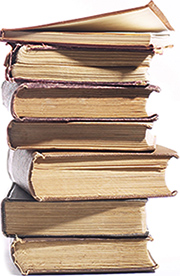
This program is currently paused, pending further grant funding. Check in later this year for further updates.
In previous years, the Archaeological Institute of America (AIA) has received funding from the Samuel H. Kress Foundation to support publication activities critical to both current and future archaeological research.
The Samuel H. Kress Grant for Research and Publication in Classical Art and Architecture funds publication preparation, or research leading to publication, undertaken by professional members of the AIA. Its purpose is to assist scholars in preparing, completing and publishing results of their research in Graeco-Roman Art and Architecture, and the broader Mediterranean world of Classical antiquity. Awards may be used for research leading to the publication of an art historical monograph or for costs associated with publication, such as image licensing.
Grants are open to scholars of all nations. To be eligible, applicants must be AIA members (Professional level) in good standing at the time of application. In the case of multi-authored or multi-edited publications, the AIA membership requirement applies only to the primary author/principal investigator. Applicants still in the research stage must have a publication contract in place with either a non-profit or commercial publisher. Research may be undertaken at domestic or international universities, libraries or study centers, or through excavation or preservation projects of Classical sites.
Proposals must include a timetable for completion of the manuscript, specific plans for publication including budget information, and a description of how the grant will be utilized.
The deadline for completed applications including references,, is March 1. Grants of $3,000 each are available though smaller or larger amounts may be awarded at the discretion of the Committee.
The program is administered by the Publication Subvention Committee which is comprised of AIA members with scholarly expertise in the areas designated for the Grant.
The selected manuscripts will acknowledge the subvention with the following statement on the copyright page or on the reverse of the title page: “This publication has been supported by a grant from the Samuel H. Kress Foundation, administered by the Archaeological Institute of America.” Below this statement must appear the logotype of the AIA (camera-ready or digital copy to be supplied by the Archaeological Institute of America). The subvention should also be acknowledged with this or a similar statement in announcements or publicity about the publication of the book, as well as in all advertisements insofar as possible.
Established in 1929, the Samuel H. Kress Foundation supports the work of individuals and institutions engaged with the appreciation, interpretation, preservation, study and teaching of the history of European art and architecture from antiquity to the dawn of the modern era. The AIA is grateful to the Kress Foundation for making important archaeological research possible through its funding.
The AIA welcomes applicants of all backgrounds and is committed to equal opportunity for all. Under no circumstances will the AIA discriminate against qualified individuals on the basis of race, color, religious creed, retaliation, national origin, ancestry, sexual orientation, gender, disability, mental illness, genetics, marital status, age, veteran status, or any other basis prohibited under applicable law.
Review the Follow-Up Check List for previous winners.
2024
University of Saint Andrews
The Marble Statuettes of the Roman Period by Brian Martens and published by the American School of Classical Studies at Athens presents, for the first time, nearly 700 marble statuettes from the excavations of the Athenian Agora. The sculptures in this volume, which were primarily set up in houses for the purposes of cult, represent gods and goddesses in well-known Classical and Hellenistic figural types. Divinities that provided personal protection, health, and prosperity are frequently represented, reflecting the everyday concerns of inhabitants of ancient Athens. In addition to presenting a detailed catalogue of the unpublished sculptures, the book contextualizes the statuettes within their ancient display settings, both in Athens and in Roman Greece more widely. The statuettes are important archaeological and art historical documents: nearly thirty well-known statue types are represented, adding new data to the study of Greek iconography, and nearly 150 unfinished pieces illustrate methods of making by a famous community of sculptors.
2024
University of California, Santa Barbara
The Temple of Artemis at Sardis and the Hellenistic Temple Tradition in Asia Minor by Fikret Yegul and published by Cambridge University Press aims to make the Temple of Artemis at Sardis accessible to wider audiences. In the book, Yegul presents an important and unorthodox pseudodipteros in the larger cultural context of Greek and Roman religious architecture of Asia Minor. It is a synthesis of some thirty years of field work/archaeology (1987-2018) with the broader concerns of art and architecture in Anatolia from Hermogenes through Hadrian. This publication searches new and broader horizons to a subject that has been central to the author’s research for a good part of his scholarly life.
2023
Duke University
Imitation and Power in Ancient Rome: an Archaeology of Mimesis by Alicia Jimenez and published by Cambridge University Press. This book asks several interconnected questions: what are the meanings of imitation? Why are the artifacts we find in the ancient Roman provinces so similar to the ones that archaeologists have retrieved at Rome? What is the role of things that look alike in the transmission of culture from one place to other or from the past to the present? How are power dynamics and imperialism enmeshed in imitation processes? How is the standard created? How should we interpret mass produced objects, such as coins, ceramics or certain types of statues or images, that flooded the Mediterranean from west to east as a result of Roman colonization? Her work is an investigation on how the Roman provinces resembled the metropolis (or not) during the early phases of the expansion of the Roman empire over the Mediterranean (2nd c. BCE – 1st c. CE) and the mechanisms of representation. It originates in the many new research questions about how ancient Roman colonialism worked that were made available to us aft er the deconstruction in the 1990s and early 2000s of the paradigm of “Romanization”, together with other even older diffusionist theories that explained cultural change in the Roman provinces as a simple process of failed imitation. Although numerous studies in the last few years have advanced new postcolonial interpretations of the expansion of Rome in the Mediterranean while others have focused on analyzing the material connections among Rome’s provinces, there are not many publications that consider the various possible causes of imitation, its potential consequences for the ‘mime’ and the model and the subversive aspects of mimicry.
2023
Oxford University
Architectures of the Roman World: Models, Agency, Reception by Niccolò Mugnai and published by Oxbow Books. This book collects essays by leading international scholars who engage with Roman-period architecture outside Rome and the Italian Peninsula, looking at the regions that formed part of the Roman Empire over a broad time frame: from the second century BCE up to the third century CE. Moving beyond traditional views of ‘Roman provincial architecture’, the aim is to highlight the multi-faceted features of these architectures, their function, impact and significance within the local cultures, and the dynamic discourse between periphery and center. Architecture is intended in the broad sense of the term, encompassing the buildings’ technological components as well as their ornamental and epigraphic apparatuses, and including a range of edifices that are not limited to public monuments or elite residences. The geographic framework under examination is a broad one: along with well-documented areas of the ancient Mediterranean, attention is also paid to the territories of North-West Europe. The discussion throughout the volume focuses on three interrelated themes – models, agency, reception –
which have been often used in an uncritical way and are now calling for a more exhaustive appraisal.
2022
CORPUS SPECULORUM ETRUSCORUM U.S.A. 6: Collections in Baltimore and Washington, D.C. by Nancy de Grummond, published by “L’Erma’ di Bretschneider. The book contains scientific examination and analysis of 32 items of Etruscan and Praenestine mirrors in 4 museums of the U.S.A. in Baltimore and Washington, D.C. : The Baltimore Museum of Art, The Johns Hopkins University Archaeological Collection, the Walters Art Museum and the National Museum of Natural History (Smithsonian Institution). The bronze mirrors frequently feature engraved scenes from myth and daily life. The primary nature of this publication is an illustrated catalog of the 32 artifacts. Each item is presented comprehensively in line drawings and photographs with a detailed description of provenance, publication history, relevant bibliography, condition, measurements, decoration, subject matter, style and dating. There is an appendix with pXRF chemical analysis of most of the items in the fascicle.
Etruria and Anatolia: Material Connections and Artistic Exchange, by Elizabeth P. Baughan and co-edited Lisa C. Pieraccini, published by Cambridge University Press. This book offers the first comprehensive investigation between Etruria and Anatolia, approaching their respective cultures as agents of artistic exchange rather than as side characters in a Greek-focused narrative. Its diverse chapters synthesize a wide range of material evidence from ca. 800 – 300 BCE, from tomb architecture and furniture to painted vases, terracotta reliefs, and magic amulets. By identifying shared practices, common visual language, and movements of objects and artisans (not only from east to west but also from west to east), this volume illuminates many varied threads of the interconnected ancient Mediterranean fabric.
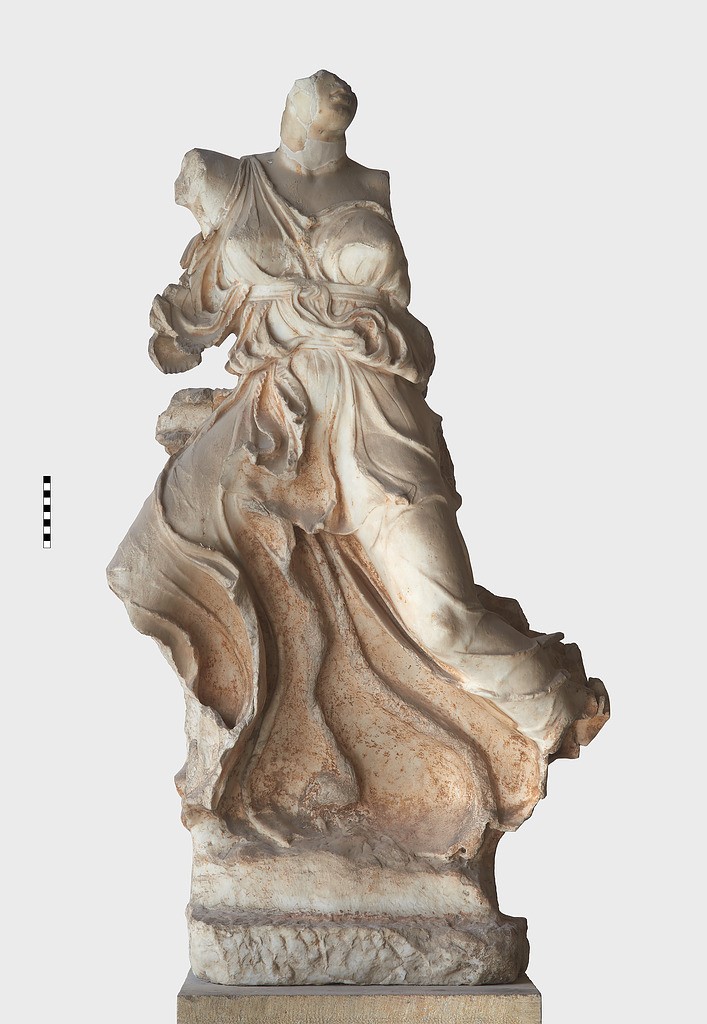
From Kallias to Kritias: Athenian Art and Architecture 450-400 B.C., edited by Jenifer Neils and Olga Palagia, and published by de Gruyter. The aim of this collection of individual studies is to demonstrate how Classical Athenian art remains a vital field not just for art historians and archaeologists, but for ancient historians, political and social scientists, anthropologists, and those in religious studies as well. The five decades (449 to 403 B.C.) covered by this volume were a seminal and turbulent time in Greek history, and the essays here investigate the ways in which political and social changes impacted Athenian art and architecture. The new research presented will hopefully inform upcoming generations of students and scholars with a deeper understanding of this period of Greek art and architecture, and encourage on-going debates. The funds from the Kress Publication Grant will support the volume’s extensive illustration program.
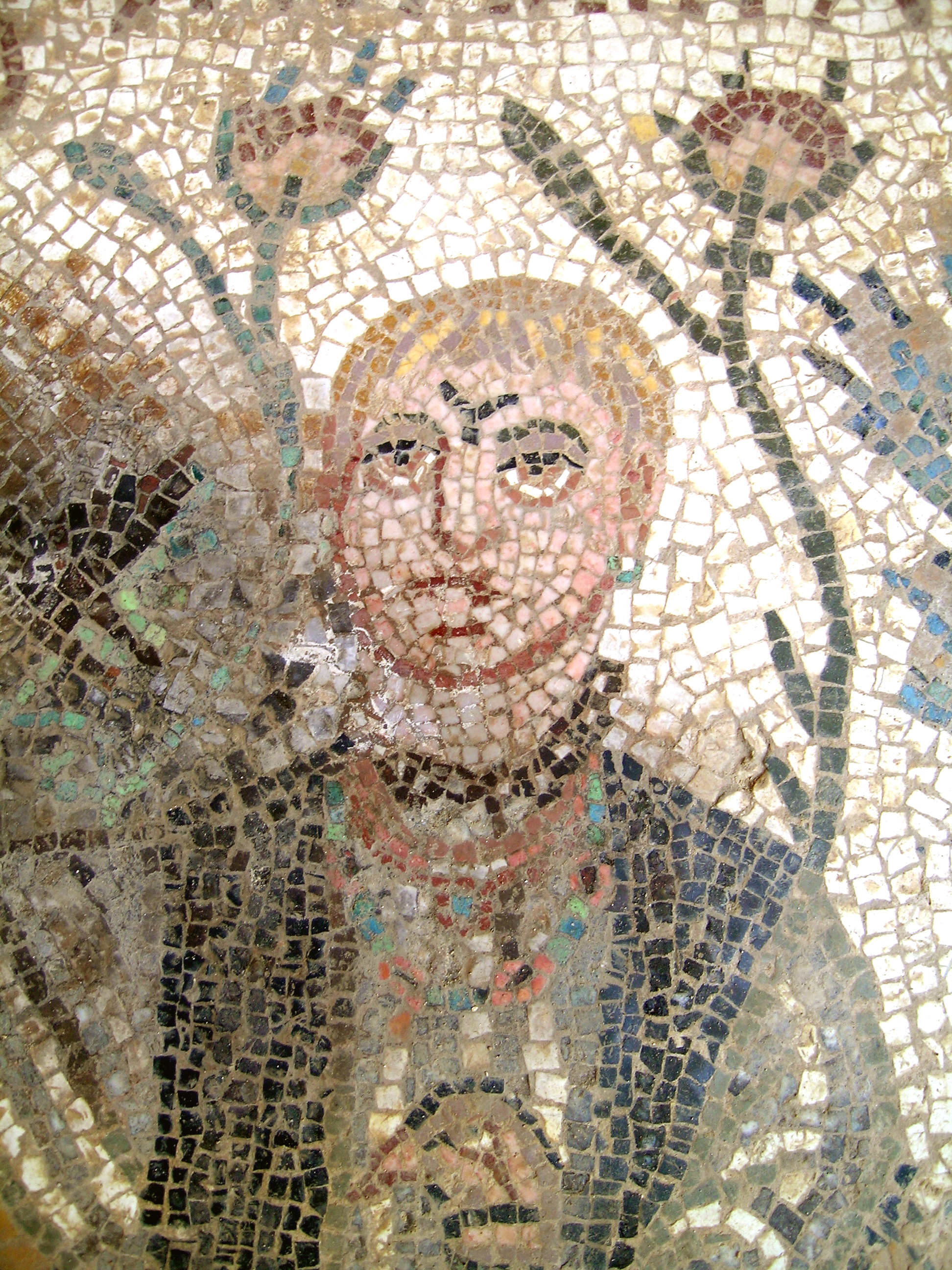
Leptiminus (Lamta), Report no. 4. The East Cemetery: Stratigraphy, Ceramics, Non-ceramic Finds and Bio-archaeological Studies, co-edited by Lea Stirling (University of Manitoba), Nejib Ben Lazreg (Institut National du Patrimoine, Tunisia), and Jennifer Moore (Trent University, Canada), published by the Journal of Roman Archaeology (JRA Supplement 110). The volume represents the culmination of many years of work and research on the Roman cemetery at Leptiminus, including detailed presentation of artifacts and ceramics, ecofacts, and stratigraphy mostly from the ‘pagan’ sector of the cemetery, and supplemented by a report on the exquisite tomb mosaics of the Christian sector. Extensive synthesis ties the findings into broader social and archaeological issues and situates the burial practices at this cemetery within Roman North Africa on a comprehensive scale. The volume is receiving both an AIA Publication Subvention Grant and an AIA Samuel H. Kress Grant for Research and Publication in Classical Art and Architecture, and the funds will support publication costs, including color illustrations throughout.
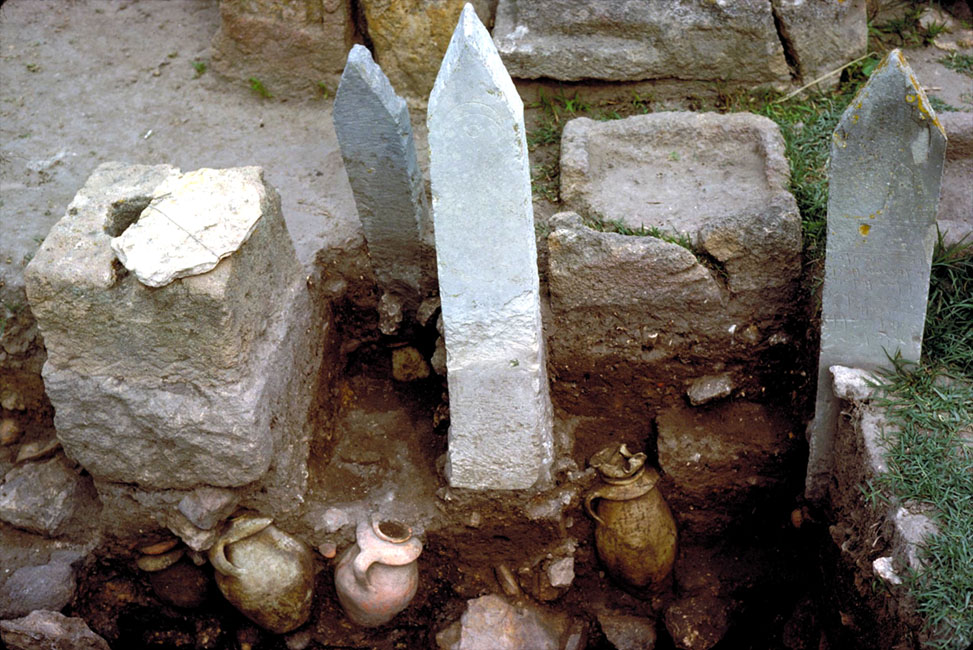
Carthage, the “Precinct of Tanit” (tophet): The American Schools of Oriental Research Punic Project: The Stager Excavations (1976-1979), edited by Brien K Garnand (Howard University), J. A. Greene, and L. E. Stager, and published by Harvard Semitic Museum/Brill. This final archaeological report documents the ASOR Punic Project excavations (1976-1979) at the so-called “tophet” of Carthage, an open-air precinct dedicated to Baal Hammon and his consort Tanit. The precinct held thousands of urns containing the cremated remains of infants as well as associated amulets, with these burials marked by thousands of rough sandstone cippi and smooth limestone stelae. The grant funds will be used for photography, digitization, and conversion of site plans into vector images, as well as transcription of hand-written field notes, registries, and correspondence.
The Theatre of Thorikos, edited by Roald Docter, University of Ghent, and published by Peeters Publishers. The Theatre of Thorikos has undergone numerous excavations beginning in 1886, but has never been the subject of a comprehensive publication due to the fact that the finds were never fully studied. Since 2018 a team directed by Andreas Kapetanios of the Ionian University and Roald Docter of Ghent University has been working on finds and stratigraphy, with the goal of finally producing an in-depth volume on the site. The Kress Publication Grant will support the digitization of finds drawings from the 1963 and 1965 seasons for inclusion in the book, as well as the restoration of three vessels from these excavations.
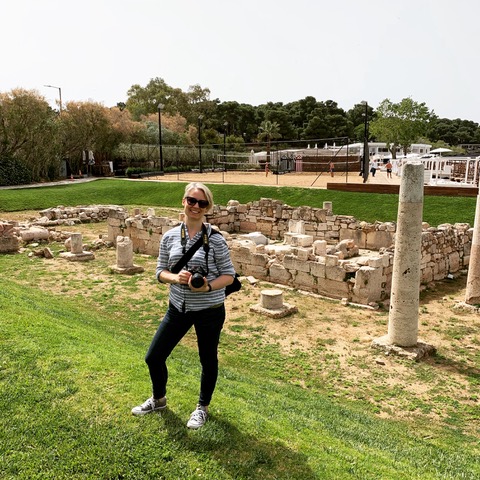
Building Democracy in Late Archaic Athens by Dr. Jessica Paga of the College of William and Mary, published by Oxford University Press. Dr. Paga discusses the built environment and monumental architecture of ancient Athens during the late archaic period to provide an answer as to how Athens transitioned from tyranny to a democracy. Dr. Paga is the recipient of both the Samuel H. Kress Foundation to support the author’s research travel, and the von Bothmer Publication Subvention to support production of the volume’s illustrations.
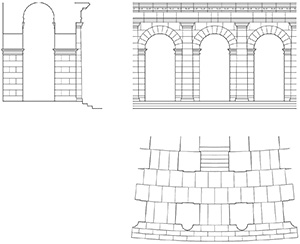
The Theater of Pompey in Rome by James E. Packer and John Burge, published by the American Academy in Rome. The volume will be an entirely original treatment of the remains, including an examination of the ancient sources, the history of the site after antiquity, a look at random excavations from the Renaissance through Professor Packer’s 2011 excavation, and a treatment of the surviving evidence for the theater, ancient, topographical and archaeological. The Kress Publication Grant will allow the authors to include three-dimensional digital images of the on-site ruins, a new colored reconstruction, and restored views.
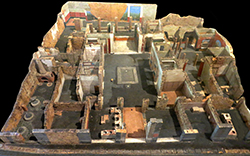
The Aschaffenburg model as a primary archaeological source for the House of Sallust: an Addendum to JRA Supplementary Series 98 in the Journal of Roman Archaeology (31, 2018), by Dr. Anne Laidlaw of Hollins College and Professor-Dr. Valentin Kockel of the University of Augsburg. The article updates the 2014 volume on the House of Sallust (which had received an AIA Publication Subvention Grant) using the Ashaffenburg model; the 1:50 scale cork model made in 1840 (of the Augustan reconstruction) provides essential information about the Pompeiian structure that had been lost over time and to wartime damage in the 1940s. The Kress Publication Grant will allow the detailed images of the model to be published in full color.
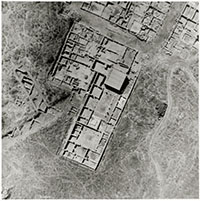
Morgantina Studies Series: The Hellenistic Houses (provisional title) by Barbara Tsakirgis, published by the Department of Art and Archaeology at Princeton University, and distributed by the Princeton University Press. This volume focuses on twelve houses excavated at the site in Sicily by Princeton University in 1955-1967, and a further house excavated in 1998-1999; none of the structures have been definitively published before. The volume will include full descriptions of the houses, including mosaics, opus signinum floors, plaster wall decorations, and cisterns, as well as objects found within the buildings. The Kress Grant will be used to fund an editorial assistant to examine and compile the author’s primary materials, as well as support work by an architect on new axonometric renderings of the houses. Funds from the AIA’s von Bothmer Fund have also been awarded to complete the publication.
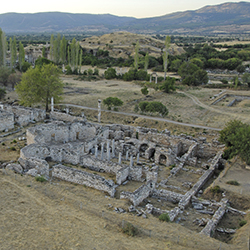
Aphrodisias IX: The Triconch House by Michelle L. Berenfeld of Pitzer College, published by Ludwig Reichert Verlag. This publication examines the evolution of the Triconch House (formerly known as the Bishops Palace), one of the best preserved late antique houses in the Greek East, located in the heart of the monumental civic center of Aphrodisias, the Greco-Roman city in southwest Asia Minor. The volume will include details of the construction and interior decoration, and will also examine the dynamic relationship between the Triconch House and the surrounding area as the politics of its environment and its own function changed throughout time. The Kress Grant will assist in the printing of photographs and illustrations, and fees for a professional indexer and a translator for a Turkish-language summary (özet).
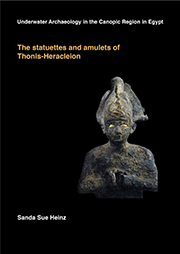
The Statuettes and Amulets of Thonis-Heracleion by Sanda Heinz, published by the Oxford Centre for Maritime Archaeology. This volume presents new findings at the site of Thonis-Heracleion, a sunken city on Egypt’s Mediterranean coast. In the Late and Ptolemaic Periods, between the 7th and 2nd centuries BC, the site was a key port at the crux of intense international exchange, particularly between Greeks and Egyptians. This volume presents the statuettes and amulets, and builds a solid foundation for work on Egyptian cult in the first millennium B.C. The book comprises three chapters and an extensive catalogue of 310 objects, and the Samuel H. Kress grant will be used as funding for the editing stage for the last two chapters.
Athens, Etruria, and the Movement of Images, by Sheramy Bundrick, published by the University of Wisconsin Press. This publication examines the import of Athenian pottery in Etruria during the sixth and fifth centuries BC. Through this volume, the author demonstrates that Etruria’s consumption of Athenian figured pottery represented an integration of the works into their existing cultural scheme, rather than a departure from tradition and subsequent “Hellenization.” This publication will build on an increased interest in the trade and consumption of Athenian goods in non-Athenian areas as demonstrated through the ceramic industry. With the support of the Kress Grant, the volume will include high-resolution photographs of objects that are not currently available in high quality publication.
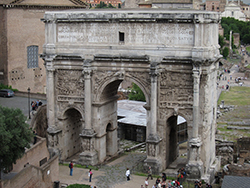
Topography and Monuments of Ancient Rome, by Susann Sowers Lusnia, published by Wiley Blackwell. This publication will be a new textbook for undergraduate students in courses on Roman topography as well as for the general public with an interest in Rome and ancient history. Each chapter centers on a particular aspect of life in the ancient city, e.g. government, commerce, religion, or victory, and traces the development of monuments tied to those themes. Each theme will be addressed chronologically, with subsections for the Pre-Republican, Republican, Imperial, and Late Antique periods, wherever feasible. While the book is envisioned as a textbook, it also embodies the core of the author’s research on the urban development of Rome in antiquity. The Kress Grant will be used to fund a 4-week research period at the American Academy in Rome, for completion of the initial draft of the manuscript.
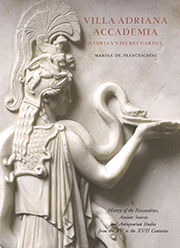
Villa Adriana. Accademia. Hadrian’s Secret Garden. Vol. 1 ‚ History of the excavations, ancient sources and antiquarian studies from the XV to the XVII centuries, edited by Marina De Franceschini, published by Fabrizio Serra Editore. This volume, the first of three books in the series, presents the history of archaeology at the Accademia, one of the lesser known but most impressive buildings of Hadrian’s Villa, privately owned and not open to the public. Dr. de Franceschini compiles information about the most important architects, archaeologists, and scholars involved in the uncovering of the Accademia, from the Renaissance and the rediscovery of Roman antiquity to the creation of the Accademia Project by Dr. de Franceschini herself. The Kress Grant will assist in general cost of publication, as well as permission costs for plans, drawing, and images used throughout this and the future volumes.
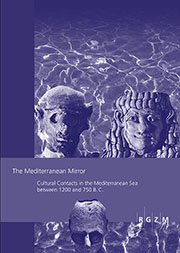
The Mediterranean Mirror: Cultural Contacts in the Mediterranean Sea between 1200 and 750 B.C., edited by Andrea Babbi, Friederike Bubenheimer-Erhart, Beatriz Marín-Aquilera, and Simone Mühl, and published by RGZM (Römisch-Germanisches Zentralmuseum). This volume brings together senior scholars and talented post-doctoral and young researchers from various disciplines to explore changing patterns of maritime connectivity in the ancient Mediterranean‚Äîa conversation that was begun at the international conference of the same name in October 2012. The Kress Grant will fund the final copy-editing of the volume.
The Mount Zion Archaeological Excavations Directed by Magen Broshi. Volume 1: Excavations along Western Old City Wall, edited by Shimon Gibson of University of North Carolina, Charlotte, published by Eisenbrauns. This volume compares and contrasts the existing historical texts pertaining to Mount Zion, first addressing architectural and stratigraphical matters relating to the city fortifications, then focusing on the pottery and artifacts through different periods, and finally describing the many hundreds of coins from the site with catalogues and stratigraphic lists. The $3,000 Grant will be used towards publication costs, including photography and drawing of artifacts, editing based on important new chronological information, and copy-editing.
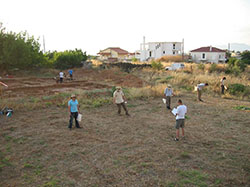
Sikyon I: the Urban Survey, edited by Yannis Lolos of the University of Thessaly, published by the National Hellenic Research Foundation. This publication will offer the results of the Sikyon Survey Project, an interdisciplinary research project focusing on the urban area of this important ancient city in the northeastern Peloponnese. In five consecutive field seasons, nearly half the total area of the ancient city was surveyed, allowing a reconstruction of the history of the Sikyonian plateau from the earliest times to the modern era. Sikyon has proven to be a cityscape rich in artifacts and the Sikyon project is one of the largest and most comprehensive urban surveys ever conducted in the eastern Mediterranean. The $3,000 grant will be used towards publication costs.
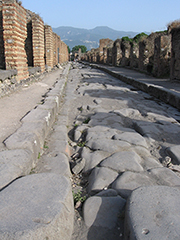
The Roman Street: Urban Life and Society in Pompeii, Herculaneum, and Rome, by Jeremy Hartnett of Wabash College, published by Cambridge University Press. This monograph represents the first book-length treatment of the Roman street as a social space. Roman civilization was distinctly urban, and as centers of political, economic, and, therefore, social life, cities offered Romans the greatest opportunities for the creation (or loss) of fame and fortunes. Professor Hartnett’s book explores the negotiation of status in this most used, yet least studied, of Roman urban spaces. The $3,000 Kress Grant will be used the support volume’s illustration program.
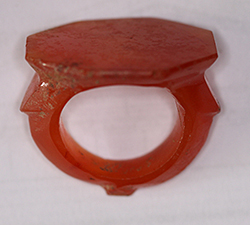
The Temple Complex at Horvat Omrit, Volume 2: Stratigraphy, Pottery and Other Finds edited by Michael C. Nelson of Queens College (CUNY), J. A. Overman of Macalester College, and D. N. Schowalter of Carthage College, and published by Brill, USA. This second volume of a three volume series serves as the final publication of the excavations of the Roman period temple complex at Omrit in northern Israel. The eleven chapters in Volume 2, each written by specialists in their specific field of artifact studies, present the various types of archaeological data collected in the field and discuss the ramifications of this new data in both the immediate regional and the broader Mediterranean historical contexts. The Kress Grant will fund the preparation of graphic illustrations, principally line drawings, that will accompany the two chapters on pottery and lamps.
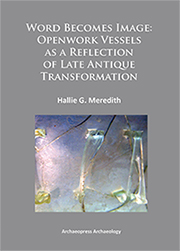
Word becomes Image: Open-work Vessels as a Reflection of Late Antique Transformationby Hallie Meredith of the University of Massachusetts at Dartmouth, published by Archaeopress, British Archaeological Reports. This two-volume work will exam these late Roman luxury items (such as the Lycurgus Cup) and attempt to put them in their cultural context; the first volume will be printed, and the second volume, an illustrated catalogue, will be in electronic format. The $3,000 grant will be used towards reproduction fees, photography costs, and copies of the volumes for copyright holders.
The Sanctuary of Demeter at Eleusis: The Bronze Age by Michael B. Cosmopoulos of the University of Missouri at St. Louis, and published by the Athens Archaeological Society. The volume constitutes the complete and final publication of the extensive Bronze Age finds from past excavations, allowing the Sanctuary and materials to be viewed as a unified whole for the first time, and shedding new light on the early life and development of this important site and of the Eleusinian cult. The volume has been awarded a $3,000 Kress Grant, and is also receiving a $3,500 Subvention through the AIA’s von Bothmer Publication Fund; the funds will be used towards the costs of printing and bookbinding.
Jewelry from the Iron Age II Levant by Amir Golani of the Israel Antiquities Authority, published by the Freibourg Academic Press in the series Orbis Biblicus et Orientalis, Series Archaeologica. Based on the author’s Ph.D., this work is an innovative study of the jeweler’s craft in the Levant, c. 1000-586 B.C., which examines past and new archaeological finds. The volume moves beyond a superficial inventory and classification of jewelry as artifacts, and examines the evolving technologies developed to craft these items, and their changing role within Bronze and Iron Age Near Eastern Society. The $3,000 grant award is being used toward the volume’s printing costs.